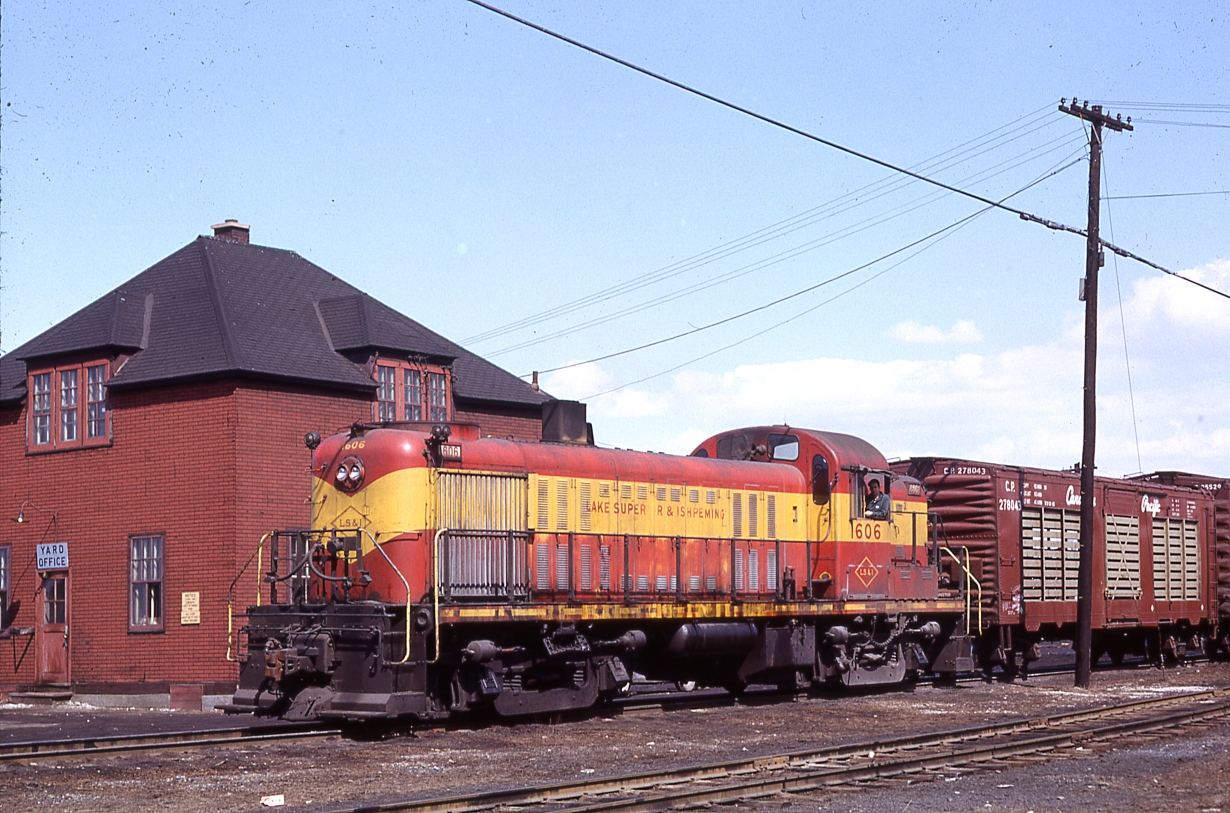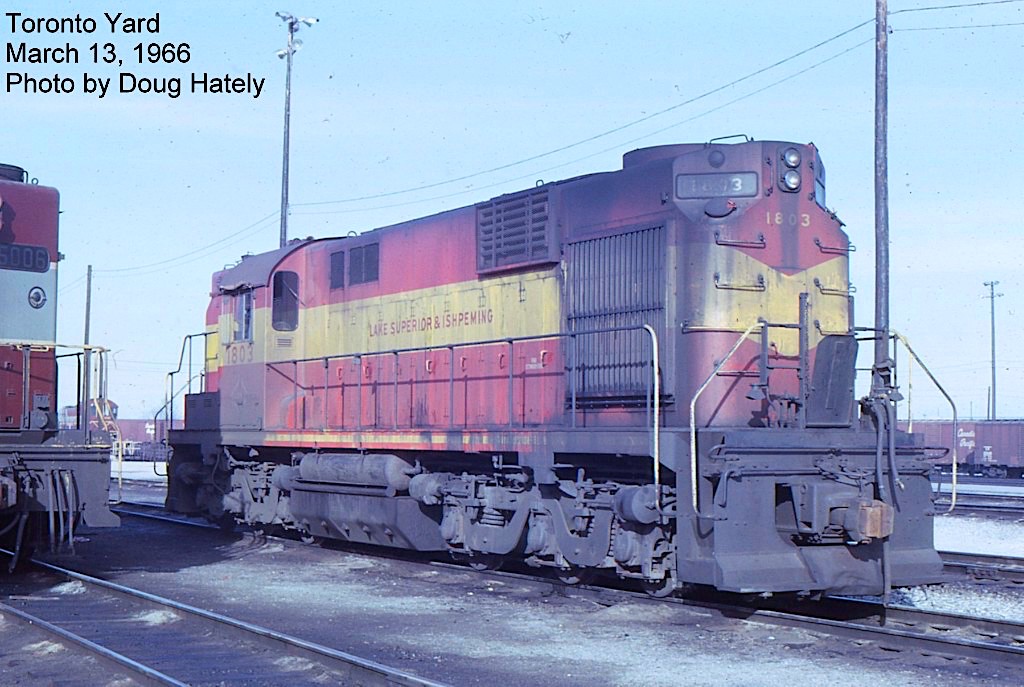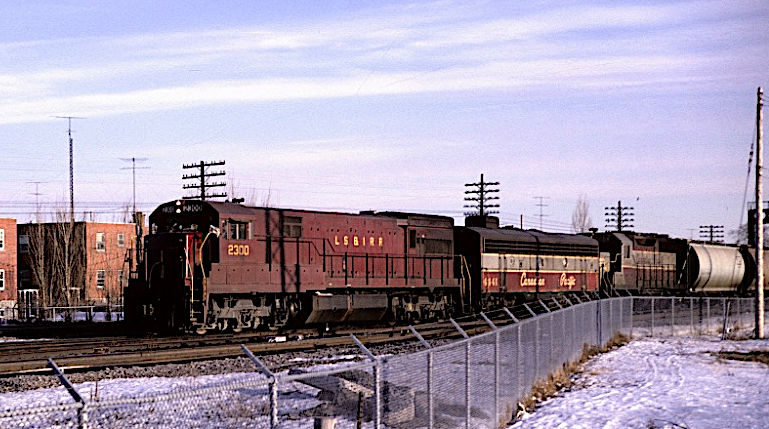|
|
|---|---|
 Ice packs on the Great Lakes slowed traffic and posed a threat to vessel safety. (CNR-owned steamship Cason J. Callaway photo by Charlie Whipp) |
|
|
The Great Lakes have long been an important component of U.S. and Canadian economies, especially
in the manufacturing sector which relies heavily on bulk material shipments. Historically,
January 15th has marked the official closing of the Great Lakes shipping season; it would be
re-opened typically ten weeks later on March 25th (or 24th if the winter was mild). During
the shutdown, lake boats were repaired and readied for the long upcoming season; likewise the
SOO Locks would undergo major repairs, along with any defered maintenance.
Northern tier railroads were also impacted by the ten-week closure, particularly those Upper
Michigan, Minnesota and Wisconsin rail lines (DM&IR, LS&I, SOO, and occasionally GN) that
hauled raw materials from mines and quarries to waiting lake freighters. Beyond the lost
revenue, it also idled expensive locomotive and equipment assets. However, the issue of
surplus assets was sometimes offset by leasing locomotives (often six-axle) to railroads
that could take advantage of the added horsepower and tractive force.
By the mid to late 1970s, the rise of locomotive leasing agents that could provide reliable
motive power any time of the year (on either a short or long-term basis) brought an end to
the practice of northern tier railroads loaning locomotives during winter.
Tne following photos from the past depict a few "snowbirds" -- a nickname given to
those who relocate to a warm climate during the winter months.
|
It's early March 1964 and leased DMIR #134 is assigned to work the hump at Detroit, Toledo & Ironton's large yard in Flat Rock, Michigan. DT&I leased several locomotives during the Winter's of 1962/63, 1963/64, 1964/65 and 1965/66 from either DM&IR or LS&I. |
New arrival DM&IR #183 waits outside DT&I's Flat Rock roundhouse in late November 1964. It's not likely the six-axle loco from Minnesota will see action hauling freights between Michigan and Southern Ohio, during the winter lease. Instead it will work the yard and make transfer runs between to Windsor, ONT. |
It was a rather remarkable locomotive combination that hauled Canadian National hotshot #492 through Bowmanville, Ontario on 27 December 1966. Up front was a six-axle leaser from DMIR SD9 #174; the trailing unit #2201 was one of CNR's remaining FM-designed (CLC-built) H16-44s. (Doug Hately photo) |
The Great Northern F7A #316A was one of sevral F-units that the railroad had assigned to the Mesabi Division hauling ore and taconite. It was leased to the SOO during the winter of 1967/68 when the docks at Allouez Bay (Superior), Wisconsin were shut down. (30 March 1968 photo at Sault Ste. Marie, Michigan) |
The all-Alco Ann Arbor railroad had a good-size diesel shop located in Owosso, Michigan; the multi-bay facility handled most heavy repairs and routine maintenance. Leased four-axle LS&I #1608 occupied one of the bays in this January 1964 image. (Emery Gulash photo / Bruce Mercer collection). |
Detroit Toledo & Ironton mechanics were an experienced bunch and capable of working on the railroad's own EMD locomotives, as well as the Alcos of sister railroad Ann Arbor. The arrival of leased LS&I U25Cs was a surprise, but only a temporary challenge. (R. Craig photo in February 1965) |
On 1 February 1965, LS&I RS3s #1610 and 1608 departed Toronto Hamilton & Buffalo's Aberdeen yard with a caboose hop. Contrasted to hauling ore trains up and down the rolling terrain of Michigan's Upper Peninsula, it was easy duty. The pair of Alcos had become aclammated to spending winters in the Ontario province or Southeastern Michigan. (Doug Wingfield photo). |
CPR's Guelph Jct. train station southwest of Toronto was built in 1923 to serve the railroad and community. The all-brick, single-story facility had overseen the arrival and departure of passenger and freight trains for more than four decades. By February 1965, it was freight only, but strangers, such as LS&I RSD12 #1802, were still being welcomed to the area. (Doug Wingfield photo) |
 It is early April and the Upper Great Lakes are just starting to release their icy grip -- shipping season will soon get underway. As for LS&I RS3 #1606, the four-axle lease unit will be headed for home rails within the week. Meanwhile, the two-story Ottawa yard office keeps a watchful eye as the RS3 shuffles a cut of cars. (Bill Linley photo) |
 LS&I's two RSD12s (#1803 & 1804) have found a 'new" home while working on the CPR in eastern Canada. Locomotive crews react positively to how quickly the 1800-hp units load, the extra pulling capability generated by an 200 additional horsepower, and the sure-footed traction that the six-motors provide. (Doug Hately photo) |
Lake Superior & Ishpeming U23C #2300 has the lead, along with two EMD-built locomotives, as an eastbound CPR freight takes aim at St. Luc Yard in Montreal on a late Winter day during 1972. (Neil Compton photo / Bruce Chapman collection) |
The date is early April and Lake Superior & Ishpeming #2300 will soon be back on home rails. Since its delivery in April 1968 to the Upper Peninsula railroad, the maroon U23C has spent very few winters in Michigan. (Mike Woodruff photo) |
After an eight-year hiatus, Lake Superior & Ishpeming #2500 returned to the Flat Rock (MI)-based DT&I. The U25C was relegated to working the yard and transfer duties, much like it did in 1965. The Penn Central units were not being leased; they were part of a pooled service. (Mike Woodruff photo) |
Leased by CPR, SOO Line F7A #2224A and F7B #501C (ex-EMD Demo #9053) lead a manifest through Guelph Junction on 2 February 1964. The EMD pair wear the colors of original owner Wisconsin Central, and they are two of 15 F7As/F7Bs leased by the Wisconsin-based railroad. (Doug Hately photo) |
| * * * Notes & Credits * * * | |
|---|---|
Sources:
Original upload: 1 February 2022 Additional Contributions: | |











